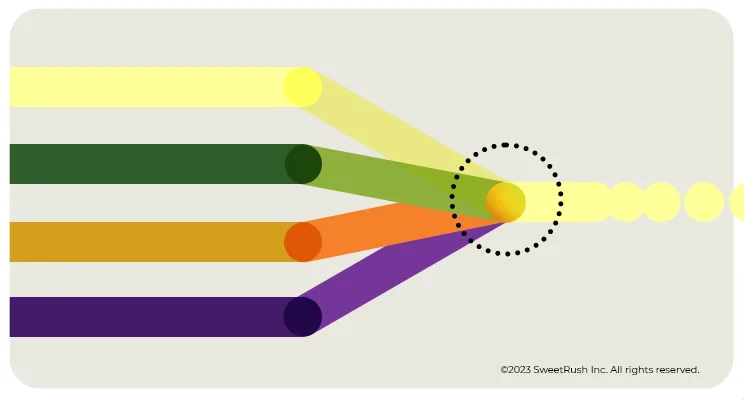
At SweetRush, we love learning and sharing knowledge.
Every year, we embark on a journey to bring you the top trends in learning and development (L&D) with our Learner Experience Trends Report. To create the report, we surveyed hundreds of L&D professionals, experts, and leaders to get a pulse on their insights, challenges, predictions, and lessons learned. Then, we analyze and compile the data and findings into a report with real-life examples and tips. And finally, we share it with you, giving you free and invaluable tools to help you in your role and at your organization.
This year’s Trend Report is L&D and Learner Experience: How L&D is elevating human potential in a time of rapid change, and inside we present the first iteration of our SweetRush Learner-Centered Design (LCD) Model, which we call the “body model.”
LCD represents a coalescence of 20 years of SweetRush’s work with our clients creating learning experiences that set new standards for engagement. It’s a holistic view of learners that is grounded in empathy and a heightened awareness of human needs.
At the foundation of LCD is empathy for learners. At SweetRush, we continually seek to deepen our understanding of and connection to learners through empathy interviews and conversations, learner analytics, and data provided by our clients.
Our design recommendations stem from our understanding of what learners think and feel, what they do, what interests them, where they want to go, obstacles in their way, their learning preferences, and more.
This model is continuing to evolve, and our next iteration will include key attributes of LCD, techniques for achieving LCD, and ways to measure.
Using the human body as a model, we can explain the key principles of our LCD approach:

We asked our survey participants where they would rank themselves on the LCD model—Levels 1 through 4, as shown in the graphic below.
In Level 1, learning is one size fits all.
In Level 2, learners have some choice.
In Level 3, learning is an ongoing part of an employee’s experience.
And finally, in Level 4, learning is continuous, flexible, and adaptable.
Most respondents (35.8%) ranked themselves at Level 1, more than a quarter ranked themselves at Level 2 (26%), whereas 17.7% were at Level 3, and 20.4% were at Level 4 (the highest level).

As Clare Dygert—SweetRush Director of Learning Experience and Instructional Design—tells us, if you want effective skills-based learning, lean into the principles of Learner-Centered Design. Let your learners help guide you to the best experience for them. Center on the learner to effectively address your business needs and enhance the employee experience.